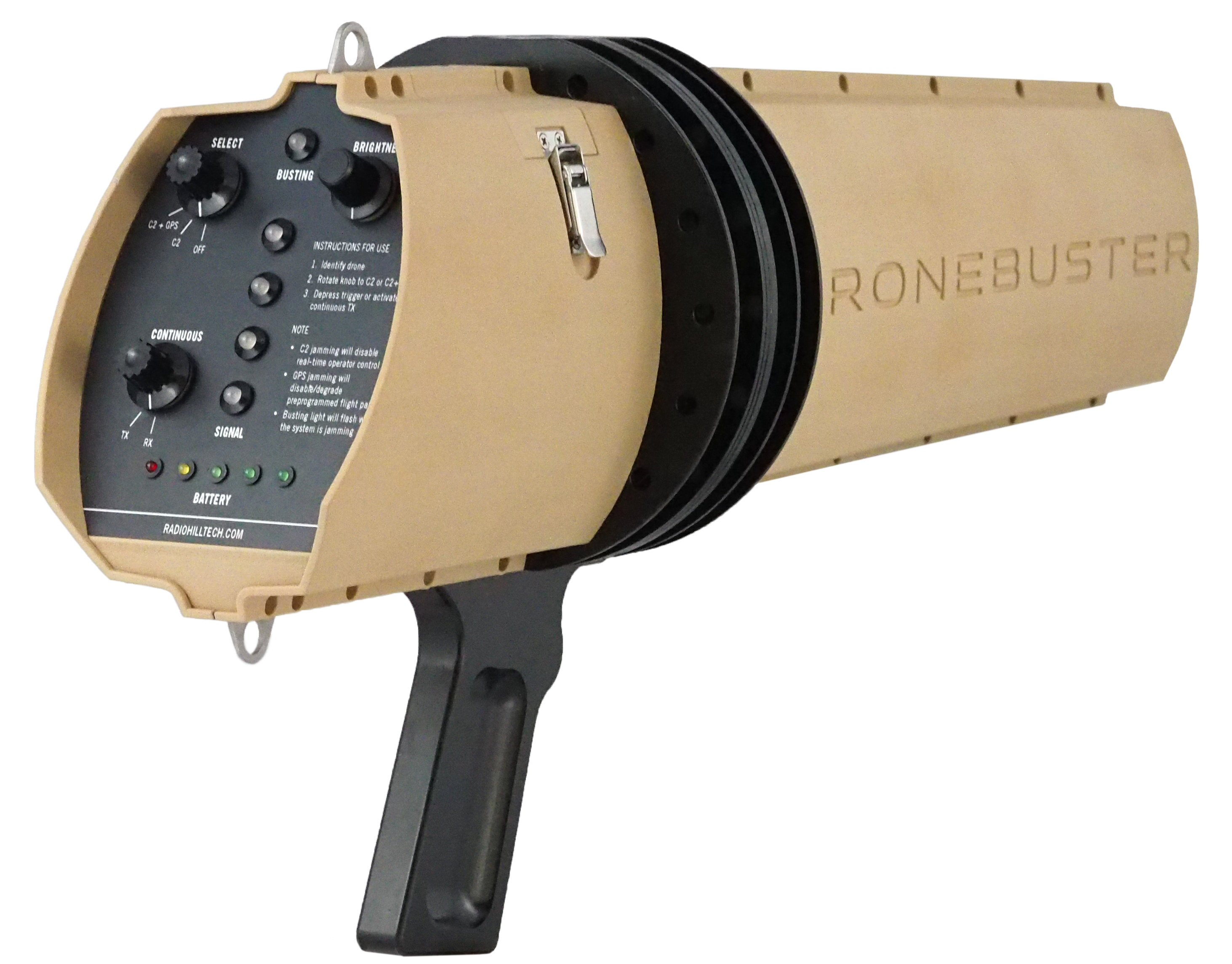The newest tool in the Army's counter-drone arsenal is the "Dronebuster," a 5-pound radar gun-like device that soldiers can use to jam weaponized commercial drones while at remote forward operating bases or on foot patrol.
The Army's Rapid Equipping Force bought 50 of the devices this month, and they should be delivered in the coming weeks, according to Clay Wild, vice president of marketing for Radio Hill Technologies, a Portland, Oregon-based technology startup.
The device starts at $30,000, depending on accessories, uses five custom antennae and a "technique generator" that uses less than 10 percent of the battery power to create the jamming signal. The power-saving method allows for a smaller device than some competitors, Wild said.

The "Dronebuster" is one of several tools the Army is using to counter unmanned aerial systems. This latest tool weighs just 5 pounds and is designed for soldiers at remote locations or on dismounted patrols.
Photo Credit: Courtesy photo via Radio Hill Technologies, Inc.
Col. Lanier Ward, director of the Rapid Equipping Force, wouldn't discuss specifics of the equipment but said the "Dronebuster" is one of many pieces of gear used in the counter-unmanned aircraft systems fight.
Ward said that three main capabilities where the counter-UAS mission is being developed include dismounted, stationary — such as at a permanent base — and vehicle.
The colonel, who has been head of the Rapid Equipping Force for the past year, said the unit aims to get off-the-shelf items into the hands of troops as quickly as possible. Their mission targets less than 180 days from requirement to delivery and averages 140 days.
The process doesn't replace traditional procurement methods, which have more requirements and more often develop gear for uses that fit the Army's long-term doctrine and sustainment goals.
"We can buy the Army time," Ward said.
Ward said the Rapid Equipping Force views equipment in a zero- to two-year window. Once an item has been around for that long, they look at whether that capability gap still exists.
Some items can be a one-time purchase; others might exist for a short period before being replaced; while still others could become upgraded gear that is used for long-term missions.
As the Rapid Equipping Force purchased the "Dronebusters," multiple Army entities converged on Fort Sill, Oklahoma, earlier this month for the annual Maneuver Fires Integrated Experiment, which, among other things, looked at the use of high energy lasers to disable or destroy drones, drone use for a "common air picture" to the platoon and company level, and using drones to deliver troop supplies, according to the Army News Service.
That event showcased a Stryker with a mounted laser dropping a drone out of the sky and demonstration drones carrying items such as a first aid kit to a designated site.
This is the third version of the "Dronebuster," Wild said. The first generations were sold to Air Force security forces, and more recent versions are now being sold to NATO clients. He did not specify which country.
Todd South has written about crime, courts, government and the military for multiple publications since 2004 and was named a 2014 Pulitzer finalist for a co-written project on witness intimidation. Todd is a Marine veteran of the Iraq War.








